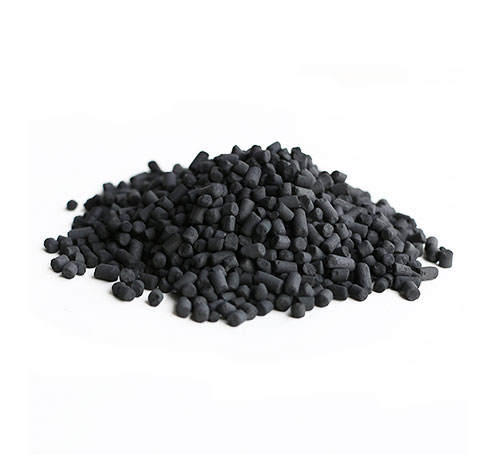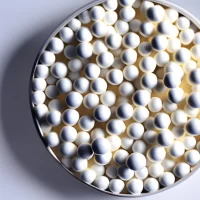Activated alumina is a highly versatile material used in industries such as air and water purification, gas drying, and fluoride removal. The activated alumina formula refers to its chemical composition, primarily aluminum oxide (Al₂O₃). The activated alumina structure significantly influences its effectiveness by providing a highly porous network that enhances its adsorption capabilities.
Despite the activated alumina chemical formula remaining constant, the activation process changes the material's structure, making it ideal for applications like filtration and gas drying.
Contents
- 1 What is Activated Alumina?
- 2 The Chemical Formula of Activated Alumina
- 3 Chemical Composition
- 4 The Structure of Activated Alumina
- 5 Crystal Structure
- 6 Bonding
- 7 Historical Context and Contributions
- 8 Recent Advancements and Uses of Activated Alumina
- 9 Benefits of Activated Alumina
- 10 Applications
- 11 The Future of Activated Alumina
- 12 Frequently Asked Questions (FAQs)
- 13 Conclusion:
What is Activated Alumina?
Activated alumina consists of aluminum oxide in a highly porous granular structure (Al₂O₃). This provides a large surface area that allows it to adsorb water, gases, and other contaminants efficiently. It is produced by heating aluminum hydroxide (Al(OH)₃) in a process called calcination, which removes water molecules and leaves behind a porous material. This unique structure makes activated alumina an ideal adsorbent for various applications.
The activated alumina formula primarily involves aluminum oxide, but the activation process gives it properties that regular aluminum oxide does not possess, such as a higher surface area and the ability to adsorb moisture and contaminants. The activated alumina chemical formula stays consistent at Al₂O₃, but the material's structure changes during activation, making it more suitable for industrial uses.
The Chemical Formula of Activated Alumina
The activated alumina formula is represented by Al₂O₃, which is simply aluminum oxide. This fundamental formula forms the core structure of activated alumina. When aluminum hydroxide is heated to high temperatures, the process drives off water, converting it into a material with significant porosity capable of absorbing and capturing moisture, gases, and various contaminants. This property makes activated alumina a valuable tool in industries that require efficient moisture and contaminant removal.
The activation process itself can vary based on temperature and other conditions, which affect the material's porosity and capacity for adsorption. Depending on the activation conditions, Activated alumina might also have small quantities of different substances, such as sodium or silica, to further improve its adsorption abilities.
Chemical Composition
At its core, alumina is composed of aluminum (Al) and oxygen (O) atoms. The chemical formula Al2O3 denotes a stoichiometric ratio of two aluminum atoms to three oxygen atoms. This simple formula, however, belies the complexity of the three-dimensional arrangement of atoms in the crystal lattice.
The Structure of Activated Alumina
The activated alumina structure is highly porous, with an extensive microscopic pore network that significantly increases its surface area. This structure is key to its effectiveness as an adsorbent. The material's surface area typically ranges from 150 to 300 m²/g, making it highly efficient in trapping moisture, gases, and other contaminants. The high surface area results from the activation process, which leaves the material with a network of pores that vary in size. These pores allow activated alumina to adsorb both large and small molecules.
The activated alumina chemical formula remains simple (Al₂O₃), but its structure determines its performance in different applications. The material's granular form, available in beads, pellets, or granules, is carefully chosen to suit various industrial needs. Its porosity and surface area make it suitable for gas purification, air drying, and water treatment processes.
Crystal Structure
The crystal structure of alumina is characterized by a repeating pattern of aluminum and oxygen atoms in a hexagonal close-packed arrangement. Each aluminum atom is surrounded by six oxygen atoms in a hexagonal arrangement, creating a trigonal planar coordination geometry. Simultaneously, each oxygen atom is coordinated with three aluminum atoms. This close arrangement results in a tightly bonded, stable structure.
Bonding
The bonds within alumina are predominantly ionic in nature. Aluminum, with its relatively low electronegativity, donates electrons to the more electronegative oxygen atoms, leading to the formation of positively charged aluminum ions (Al3+) and negatively charged oxide ions (O2-). The strong electrostatic attraction between these oppositely charged ions forms the ionic bonds that hold the alumina structure together.
Historical Context and Contributions
Activated alumina has existed since the early 20th century. Still, its use as a specialized adsorbent material didn't gain momentum until the 1930s. Researchers discovered that heating aluminum hydroxide in a controlled process created a material with exceptional properties for adsorbing moisture and gases. In 1936, Dr. Herman H. Bär patented a method to produce activated alumina specifically for gas and air drying systems, which revolutionized the industrial use of this material.
Since then, activated alumina has been widely used in various applications, thanks to its adsorptive power, which arises from its formula and structure.
Recent Advancements and Uses of Activated Alumina
In modern industries, activated alumina is used in several fields, including water treatment, air and gas drying, and even removing fluoride from drinking water. Let's explore the most common uses:
- Water Treatment:
Activated alumina removes fluoride, arsenic, and other impurities from drinking water. The World Health Organization (WHO) has endorsed activated alumina as one of the best materials for fluoride removal, particularly in areas with high concentrations of fluoride in water. - Gas and Air Drying:
Activated alumina is commonly used in natural gas processing, petrochemical refining, and other industries where moisture must be removed from gases. Its high surface area and ability to adsorb moisture make it an ideal choice for gas dehydration. - Fluoride Removal:
Activated alumina has been instrumental in removing fluoride from drinking water, especially in regions where high fluoride levels are naturally present. Its ability to adsorb fluoride is a key advantage in ensuring safe drinking water. - Gas Purification:
Activated alumina is often used in natural gas dehydration systems to remove moisture and trace contaminants. Its activated alumina chemical formula allows it to adsorb water vapor, sulfur compounds, and other impurities.
Benefits of Activated Alumina
- High Adsorption Capacity:
The activated alumina structure gives it an impressive ability to adsorb moisture and contaminants. Its high surface area and porous nature allow it to trap various molecules efficiently. - Durability:
Activated alumina is durable and can withstand harsh conditions, including high temperatures and aggressive chemicals, making it suitable for long-term use in industrial environments. - Cost-Effectiveness:
Activated alumina is an affordable solution compared to other desiccants and adsorbents, making it a popular choice for large-scale industrial applications.
Applications
Ceramics:
The high hardness and thermal stability of alumina make it a cornerstone in the ceramics industry. It is used in the production of high-performance ceramics, including cutting tools, electrical insulators, and wear-resistant components.Catalyst Support:
Alumina's chemical stability and high surface area make it an excellent support material for catalysts in various chemical processes, particularly in the petrochemical and refining industries.Grinding Media:
Alumina's hardness and resistance to wear make it a preferred material for grinding media in ball mills, contributing to efficient material processing in industries such as mining and ceramics.
The Future of Activated Alumina
The future of activated alumina looks promising as industries look for more sustainable filtration and purification materials. The material's ability to improve the efficiency of processes like gas purification and water treatment continues to drive demand. Researchers are exploring enhancing the activated alumina formula to improve its adsorptive properties and expand its use in carbon capture technologies.
In 2020, a study by the University of California, Berkeley, focused on optimizing the activated alumina structure to improve its ability to capture carbon dioxide. This research is helping to unlock new potential for activated alumina in addressing environmental challenges like climate change.
Frequently Asked Questions (FAQs)
1. What is the formula of activated alumina?
The activated alumina formula is Al₂O₃ or aluminum oxide. This simple chemical formula represents the core compound. Still, the material's structure is activated through a heating process to enhance its adsorption properties.
2. How does activated alumina work?
Activated alumina adsorbs moisture, gases, and contaminants onto its surface, facilitated by its high surface area and activated alumina structure. This allows it to be effective in applications like drying and purification.
3. What is the difference between activated alumina and molecular sieves?
While both activated alumina and molecular sieves are adsorbents, activated alumina typically adsorbs moisture and larger molecules. In contrast, molecular sieves are designed to adsorb smaller molecules selectively based on size. Both materials are used in filtration, but molecular sieves are more specialized in selective adsorption.
4. Can activated alumina remove fluoride from water?
Yes, activated alumina is highly effective at removing fluoride from drinking water. It is a popular choice for water purification systems in areas with elevated fluoride levels.
5. How is activated alumina regenerated?
By applying heat, activated alumina can be restored by eliminating the contaminants that have been adsorbed. This restores the material's ability to adsorb moisture and other molecules, allowing it to be reused in industrial processes.
6. Is activated alumina safe to use?
Yes, activated alumina is safe for industrial water treatment and gas purification applications. However, safety precautions should be followed to avoid inhalation, particularly in its powdered form.
Conclusion:
In conclusion, the activated alumina formula is based on aluminum oxide (Al₂O₃), which serves as the chemical foundation of this material. The activated alumina structure gives it a highly porous network, enhancing its adsorption properties.
Finally, while the activated alumina chemical formula remains consistent, the structural changes during activation make it practical for various industrial applications.



